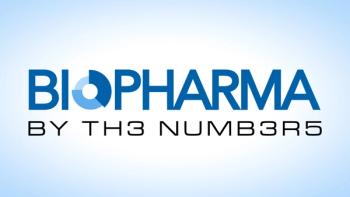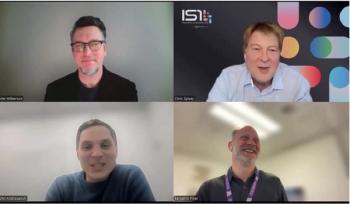
RNAnalytics CPHI Interview, Part Two: Nanoparticle Case Studies and Response to US mRNA Pullback
In the conclusion of a two-part conversation, Viktoria Enkmann of RNAnalytics says she had a hard time understanding the United States’ mRNA decision in August 2025.
Previously in Pharmaceutical Technology® Group’s CPHI Frankfurt 2025 coverage,
In Part Two of PharmTech Group’s discussion with Enkmann, she delves further into the various approaches to nanoparticle analytics, including the instrumentation that is used in the process—which she said may not need to be as cutting-edge as expected.
“We do not force our users to purchase yet another instrument, to go through the procurement process, to get it delivered, get it installed, get the people trained,” Enkmann says in the interview. “We allow them to continue using the instruments that they already have and just add additional features to it.”
Enkmann also responds to
“That news absolutely made it over the ‘big pond,’ and it kind of shocked me very personally, because I'm a firm believer that RNA-based therapies are the drugs of the future,” she says, “because it just makes sense to address diseases at their root cause and not go through all the process of making a protein in some kind of an organism and going through upscaling and downstream manufacturing and cleaning up a protein slurry, just for instance, to have an antigen made for a vaccine.”
Transcript
Editor's note: This transcript is a lightly edited rendering of the original audio/video content. It may contain errors, informal language, or omissions as spoken in the original recording.
I'm Victoria Enkmann. I'm the CEO and one of two co-founders of RNAnalytics, and our mission is to make the quality control of nanoparticles easier.
We can robustly transform any capillary electrophoresis system that is currently used to test different quality attributes of the nucleic acids, but is currently no longer used once these nucleic acids are encapsulated in their final particles, in their final delivery form. And we can transform them into nanoparticle analytics workhorses and can run two different assays on that single platform, which has led to a tremendous decrease in operator time.
It also has drastically reduced the variability between different rounds. For instance, if you do particle size by DLS [dynamic light scattering], which is currently the gold standard, then just based on the mathematics behind processing data from light scattering, there's a power, to the power of six in the mathematical formula, which means that even a very small change in the raw signal that you're getting, it amplifies a lot. That ultimately results in having maybe a very small population of aggregates in your sample, but your whole readout is skewed because this is weighted so highly.
Using our approach, we do not see the same issue. We have a much more robust readout that works across different LNP [lipid nanoparticle] chemistries, works across different particle sizes, works across different operators and across different labs. And when we compare it to DLS, where you measure the same sample twice on the same instrument, and you get a different result just because the laser had a slightly different angle, it hit a particle at a slightly different angle, and then you get a completely different readout—our methodology is much more robust and much less prone to these variations.
This makes a great impact to labs, because we do not force our users to purchase yet another instrument, to go through the procurement process, to get it delivered, get it installed, get the people trained. We allow them to continue using the instruments that they already have and just add additional features to it. Many of the ‘shiny new toys,’ analytical instruments are just sitting in a corner and collecting dust because maybe the person that purchased it left the company, or the former expert got pregnant, or whatever. So through standardization and shipping all the pre-validated reagents with pre-validated methods, we really get rid of that variability and allow people to get insights faster and more reliably.
That news absolutely made it over the ‘big pond,’ and it kind of shocked me very personally, because I'm a firm believer that RNA-based therapies are the drugs of the future, because it just makes sense to address diseases at their root cause and not go through all the process of making a protein in some kind of an organism and going through upscaling and downstream manufacturing and cleaning up a protein slurry, just for instance, to have an antigen made for a vaccine. It makes much more sense to just give the body the tools that it needs to present the antigen itself. So for me, personally, I can't really understand that decision.
But on the other hand, policy cycles don't really change the science, and they also do not change the need for QC [quality control]. And one of the big areas where mRNA-based therapeutics are highly relevant is oncology, and not just therapeutic vaccines. And in this area, the contracts were not canceled, so this is still going on, and even the policymakers in the US recognize that this is a very important area.
Specifically for vaccine manufacturers, vaccine developers that are facing tighter budgets now—also a lot of biotechs here in Europe have trouble fundraising and are seeing tighter budgets than they were used to in 2020–21—but especially in this current situation, I think that platform-agnostic LNP QC is more important now than ever before, because companies do not have the budget to spend hundreds of thousands of Euros or dollars on shiny new instruments that solve one task or another task.
We kind of need to take a look at what is really needed. What data do we need to show, and how can we get to these data as efficiently as possible? And therefore, for our business model, it's not a big dealbreaker. However, on a personal level, I can't understand the decision.
I think it's a very challenging field. It is all still quite new. There was a big hype during covid. We thought RNA-based therapies are going to be the future very fast. Now, it turns out it's still going to take a little bit longer. But I personally am convinced that in 20 years, 90% of newly approved drugs are going to be based on RNA, and we need to prepare for that.
Even though the market is quite small right now, this is a technology and this is a market segment that is growing very quickly, and therefore, I think providing tools for scientists in this field and allowing drugs to reach the patients faster and ultimately save millions of lives is very critical.
That's what drives me, and that's what gets me up in the morning. I really see that I can make an impact with the work I do, both in driving this company forward, but [also], as we're a small company, sometimes even jumping into the lab and helping out there. It's really inspiring, and I'm excited [about] what's coming up in the next few years.
Newsletter
Stay at the forefront of biopharmaceutical innovation—subscribe to BioPharm International for expert insights on drug development, manufacturing, compliance, and more.





